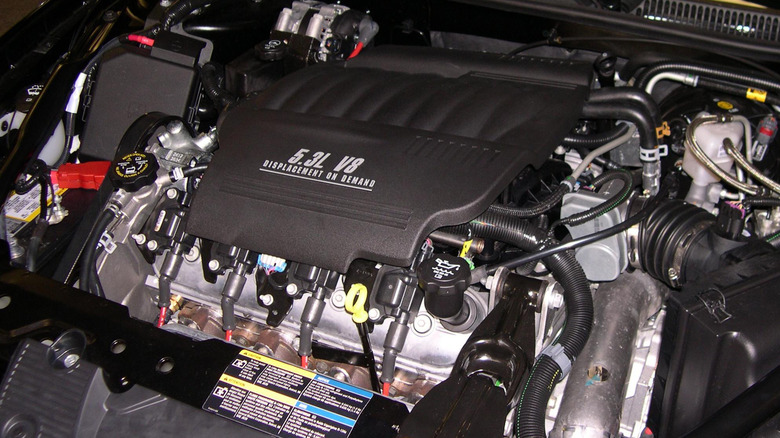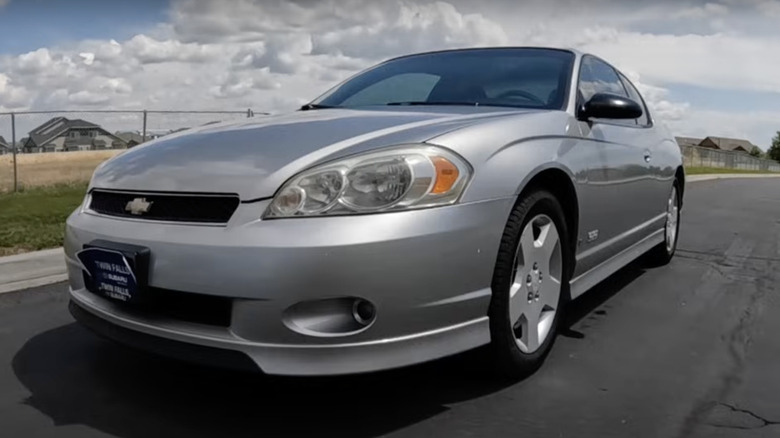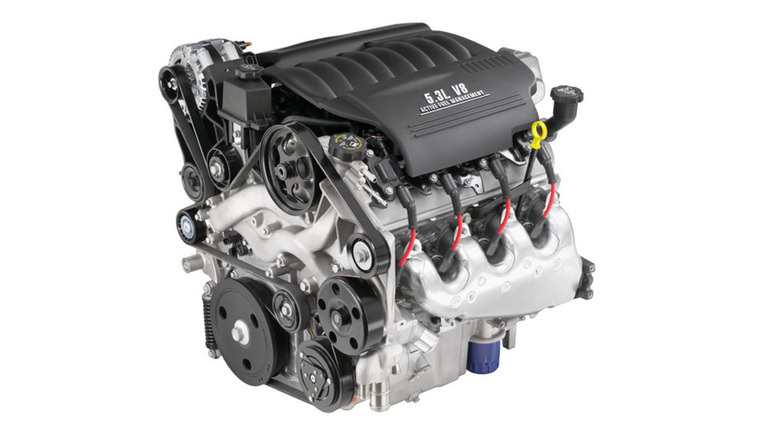Common Problems With GM's LS4 Engine (According To Owners)
General Motors began developing the first LS series V8 engine in 1993 before unleashing it under the hood of the 1997 Corvette, the fifth of that model's eight generations. GM began updating the LS series almost immediately upon debuting it, and by the early 2000s, the company was producing the 5.3-liter LS4, which first dropped in the 2005 Pontiac Grand Prix GXP. Only in production until 2009, we ranked the LS4 as the worst of all the LS engines, thanks in part to its somewhat disappointing output of 303 horsepower and 323 pound-feet of torque.
In comparison, the smaller and lighter 4.2-liter V8 in the 2005 Audi A6 Quattro put out 335 horsepower and 310 pound-feet of torque. The LS4 engine's compact size and transverse mounting make it as good a candidate as its cousins for swapping into other cars, but the LS4 was plagued by some common problems, some of which have been chronicled by owners on forums over the years. Read on to hear some of these cautionary tales so you can decide if a car with an LS4 engine is for you.
Transmission failure and burning oil were reported by owners
The most commonly reported issues with the LS4 engines involve problems with the Displacement on Demand (DoD) active fuel management system and the weak stock 4T65E four-speed automatic transmission.
In a 2017 thread on ls1tech's forums soliciting advice about using an LS4-powered car as a daily driver, 5.0stang wrote, "I have had as a DD for about a year now and put about ~30k (100k-130k). It is a fun car to drive as a DD, but I have had nothing but problems with it. Replaced the transmission at 106K, electrical issues with fans, clicking in suspension, TC (Torque Converter) not functioning, etc. Every now and then I notice a ticking at start-up. After research, they are all fairly common if not very common issues."
In 2012, NewCar posted to Grand Prix Forums asking for similar advice, adding that they had heard "some bad things regarding the trans & burning oil." BillBoost37 replied that he had heard the same from a couple of friends of his who own LS4-powered cars, adding, "There's been mention of disabling the DOD because it'll drive you nuts." Boarderx3120 dismissed some of the common complaints from other owners, noting that their transmission "consistently maintains a temp well below the recommended maximum temp of the fluid which is 175. D.o.d. has not been an issue for me either as I can't tell when it kicks in unless I'm looking at the "instant mpg" on the info center. Haven't had to add any oil either."
The Displacement on Demand system may be to blame for excess oil consumption
Buickman104 advised others to "just keep an eye on the trans. That is the car's weak link." TheMonty chimed in to add, "The burning oil deal is due to the DoD. Tuning out the DoD eliminates this issue. My DoD is still active and since I live in a hilly area, it really does not stay on very long and I have yet to add a drop of oil to my LS4."
A 2011 thread on a Pontiac Fiero Forum asked about reports on LS1Tech about the LS4's issues and got several replies. One was from fieroguru, who noted that "Considering we are still in single digits on the # of Fieros with swapped LS4's, it isn't any surprise that we haven't seen any failures. It appears the torque converter, line pressure and overall fluid temp is what kills the LS4 4T65e-hd. The clutch material in the torque converter breaks up and takes out the transmission. If you are running an LS4/4T65e-hd the first investment should be on a transmission cooler and closely monitor the transmission temps."
The professionals at Triple Edge Performance in Fort Wayne, Indiana echoed owners' opinions that the attached transmission was the weakest part of the LS4 engine. On a page dedicated to such issues, they noted that debris from the torque converter often obstructs the filter and cooling passages, leading to overheating of the fluid and eventual transmission failure after 60,000-80,000 miles on a factory-built assembly.


